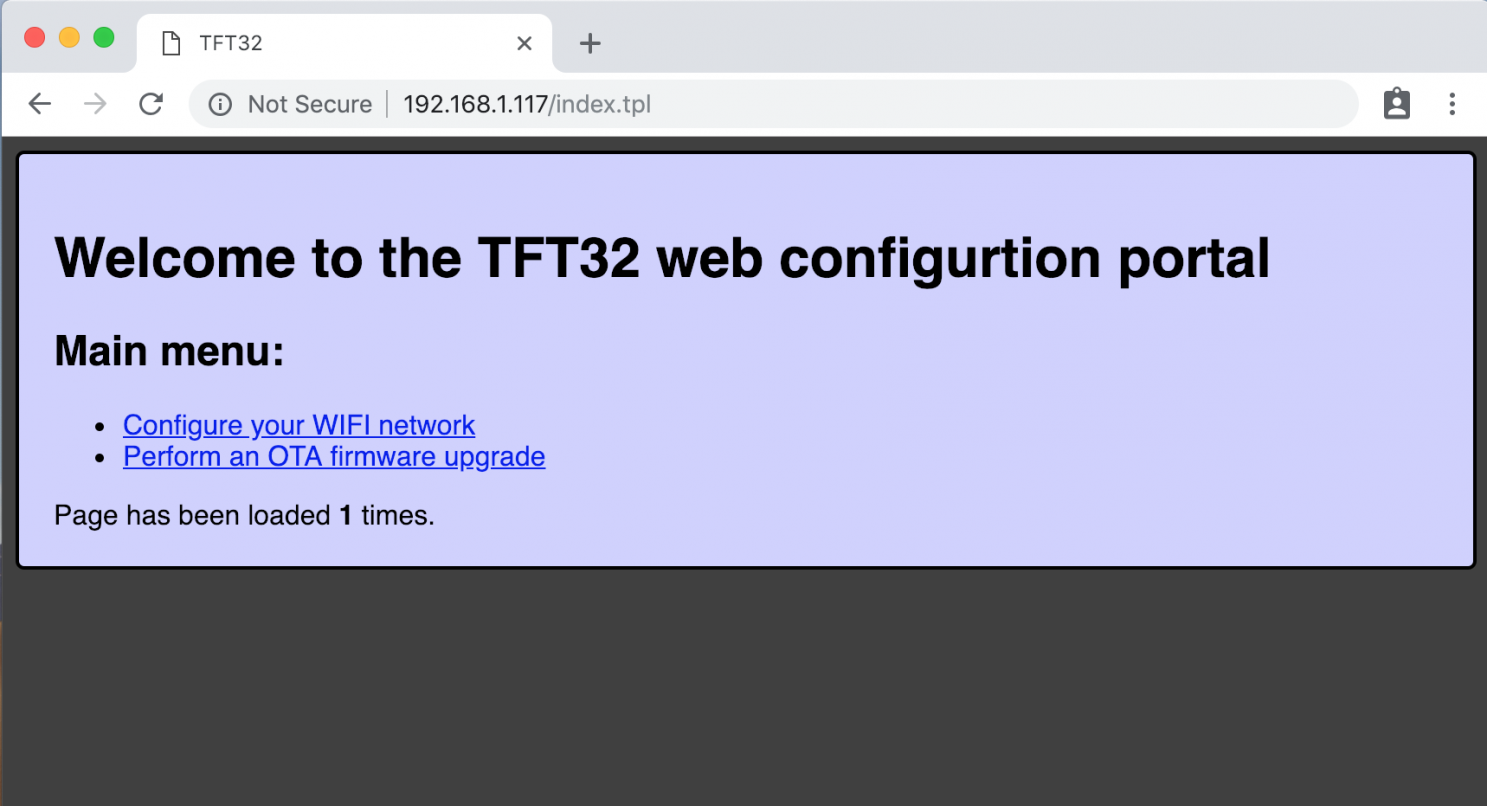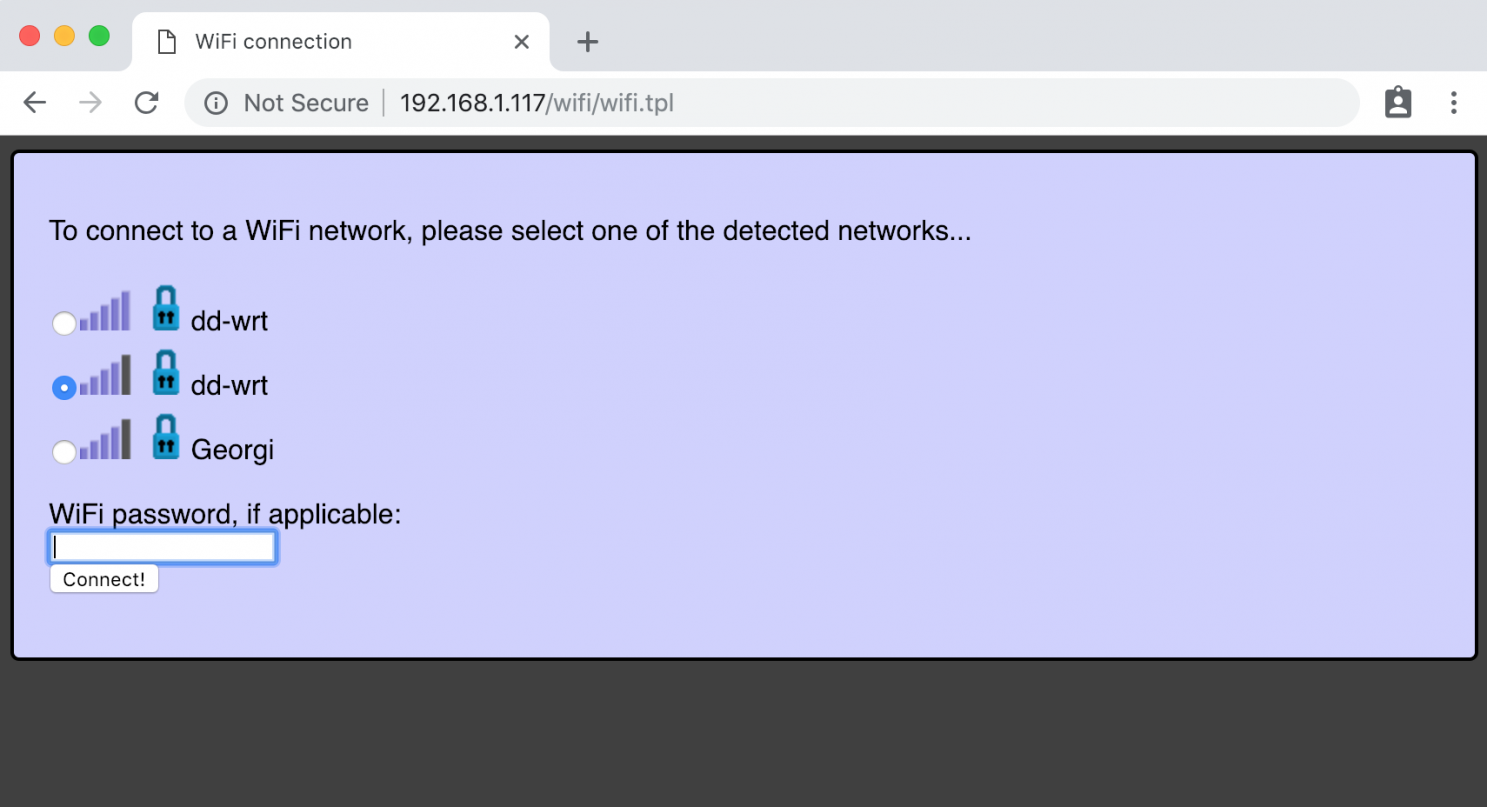I am working on a thermostat control project using the TFT32 hardware, let me share a video of the Wi-Fi configuration GUI (still work in progress). The Wi-Fi provisioning via GUI addresses one of the significant challenges when setting up an IoT product – the initial setup. I have already blogged on this subject a few years ago. This GUI is developed using LittlevGL and illustrates how easy it is to provision an IoT product with Wi-Fi credentials:
Alternatively, I have an option for SmartConfig, it allows users to connect embedded devices to a Wi-Fi network through a simple configuration on a smartphone. However, SmartConfig has a high failure rate in a congested Wi-Fi environment, and may it be difficult or impossible to use in crowded urban locations.
I also have a web configuration portal available on access point as an option, that’s convenient in some cases when setting up without access to the touch GUI. The configuration portal is based on Jeroen Domburg’s ESPHTTPD project, the same I have used in quite a few of my previous projects.

Web config portal 
Wi-Fi network selection
Finally, there is an option for WPS, this is an old, probably forgotten option that many modern routes have. Wi-Fi Protected Setup (WPS; originally, Wi-Fi Simple Config) is a network security standard to create a secure wireless home network.
Introduced in 2006, the goal of the protocol is to allow home users who know little of wireless security and may be intimidated by the available security options to set up Wi-Fi Protected Access, as well as making it easy to add new devices to an existing network without entering long passphrases. However, since it is not supported by all routers, it is unreliable to

Pingback: Human-Machine Interface (HMI) modeling and implementation using event-driven finite-state machines – Martin's corner on the web